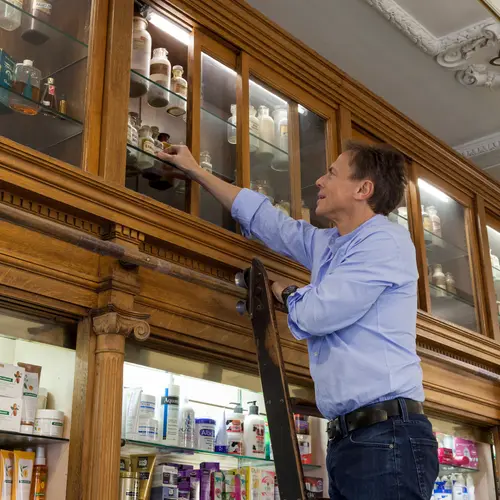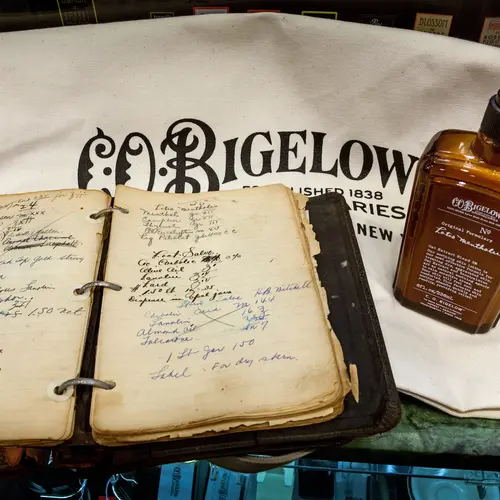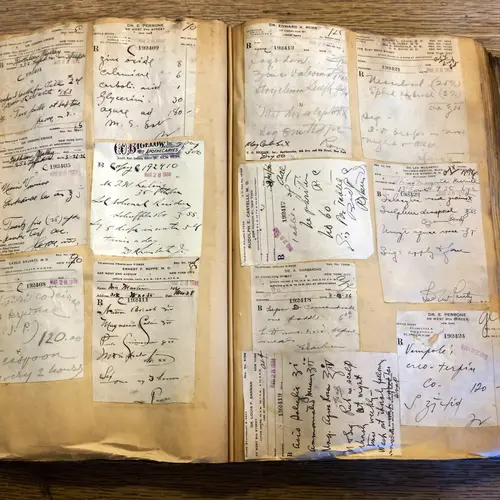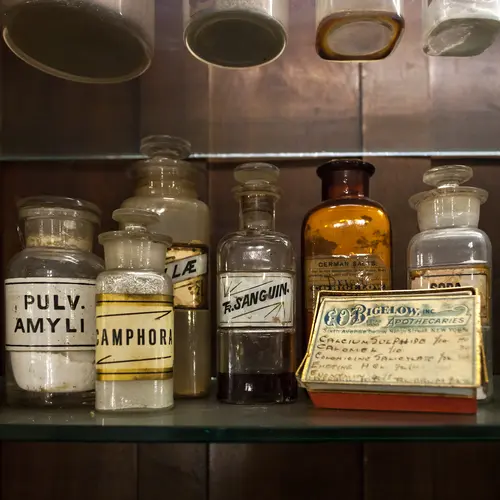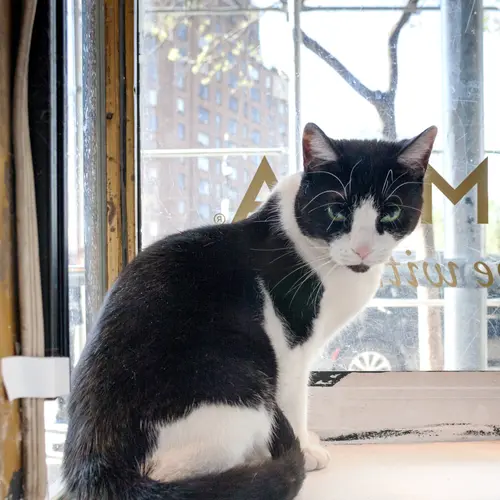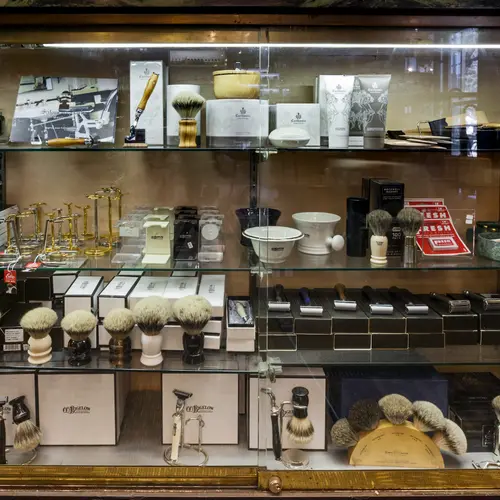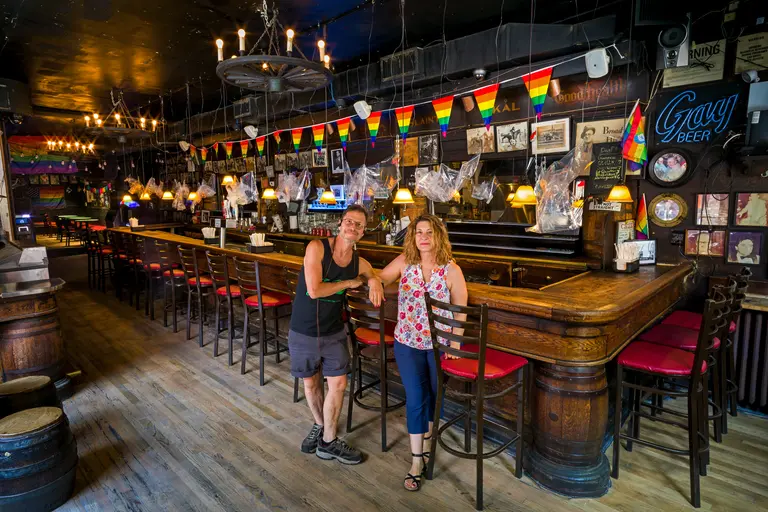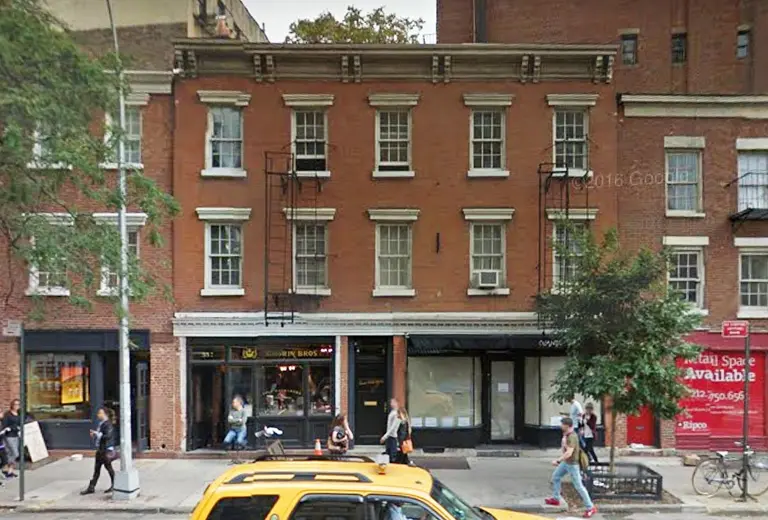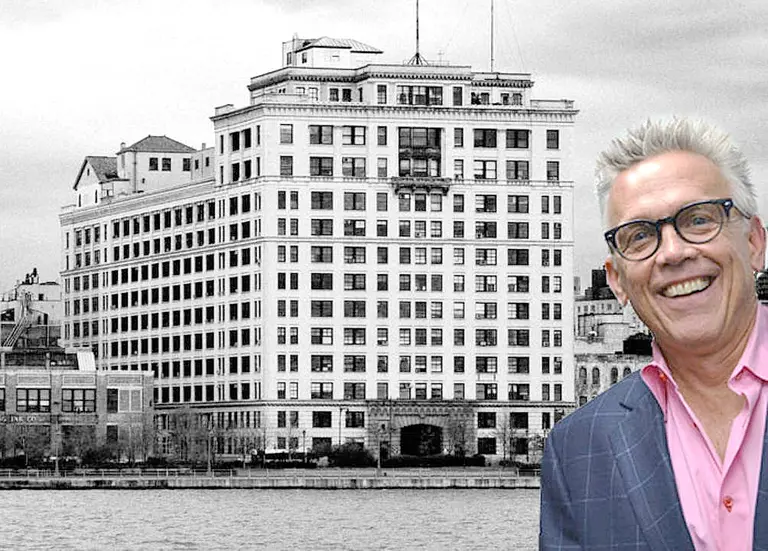Where I Work: Inside C.O. Bigelow Apothecaries in the Village, the oldest pharmacy in the country

6sqft’s series “Where I Work” takes us into the studios, offices, and off-beat workspaces of New Yorkers across the city. In this installment, we’re touring the oldest pharmacy in the United States, C.O. Bigelow Apothecaries in Greenwich Village, and talking with owner Ian Ginsberg. Want to see your business featured here? Get in touch!
C.O. Bigelow Apothecaries was established in 1838. It is the oldest apothecary in America. It was originally called the Village Apothecary Shop and was opened by the Vermont physician, Galen Hunter. It was renamed C.O. Bigelow Apothecary when it was purchased by an employee, Clarence Otis Bigelow in 1880. The apothecary is in fact so old that it once sold leeches and opium as remedies. According to legend, the chemists at Bigelow even created a salve for Thomas Edison to treat his burned fingers when he was first developing the light bulb.
In 1922, the apothecary was sold to the pharmacist, Mr. Bluestone, employed by Bigelow, thereby continuing the unique legacy of passing ownership from employer to employee. Bluestone sold the pharmacy to yet another pharmacist employee, William B. Ginsberg in 1939. And since 1939, three generations of Ginsberg’s have owned and operated the shop, passing down from father to son to most recently grandson, Ian Ginsberg, who 6sqft spoke with at this historic pharmacy in Greenwich Village at 414 Sixth Avenue.
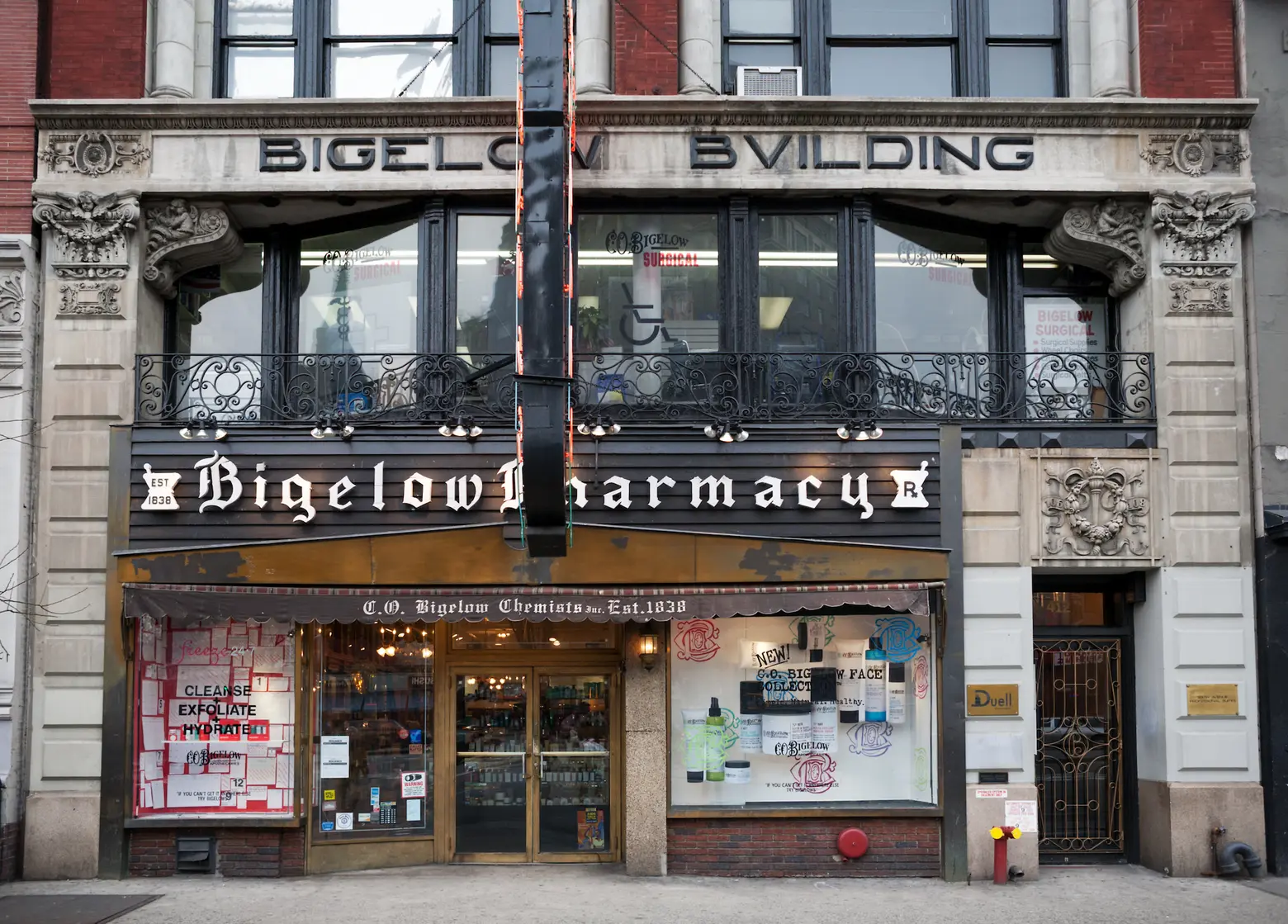
Ian: Bigelow has been on the same block since 1838 but was originally located two doors down. It moved to its present location in 1902 when Clarence Bigelow wanted a bigger space for his business and had this building built for him. Today, the store still has much of its original interior including floor to ceiling oak cases for displaying items, chandeliers, marble pillars, tin ceilings, gas lamps, and tile floors. A soda fountain was added to the store in the 1920s but the fountain and its 40 stools were removed in 1984. We are still using part of the original wooden soda fountain counter as our cosmetics showcase.
Many of the items we sell today were formulated in the 1800s, including our signature cold creams, body creams and salves. Many of our customers have been returning here for years because it is a totally different experience from any other pharmacy. Everything we sell here is based on assisted sales. It’s not just products lined up on shelves in aisles, where if you have a cold, you are directed to Aisle 1. We speak to our customers and ask them what they need and help them make the appropriate selection. We even formulate custom prescriptions and flavor medicines for children and dogs on the premises. We’ve had many famous customers over the years, including Mark Twain and Eleanor Roosevelt. We still have one of Mark Twain’s purchase receipts for medicine in our scrapbook.


6sqft: You told us a few years ago, that you have worked in the store since you were a young boy, but we also read that you were initially reluctant to join the family business. Can you tell us more about that?
I grew up in the store. I began working at the soda fountain washing dishes and filling jelly cups when I was like 7 years old. I also used to stand on a crate behind the pharmacy counter and greet customers. I studied drums/percussion from a young age and wanted to be a musician. I played professionally throughout high school and college…club dates, rock bands, jingles, theatre, etc.

This book contains the original 1870 formula for the Lemon Body Cream, still a customer favorite
After graduating from the Pharmacy College of Long Island University, you started working full time at the shop and then took over the business in 1995. Was the store already producing its original formulary items or was it you who reintroduced those products to the public?
When I began in 1985 I worked as a pharmacist. At that time we weren’t producing any cosmetic or personal care products. My early time I spent focusing on the in-store experience and our merchandising and display. We began looking at our own branding towards the mid-1990s. Our own line includes our popular Lemon Body Cream, which was originally formulated in 1870.

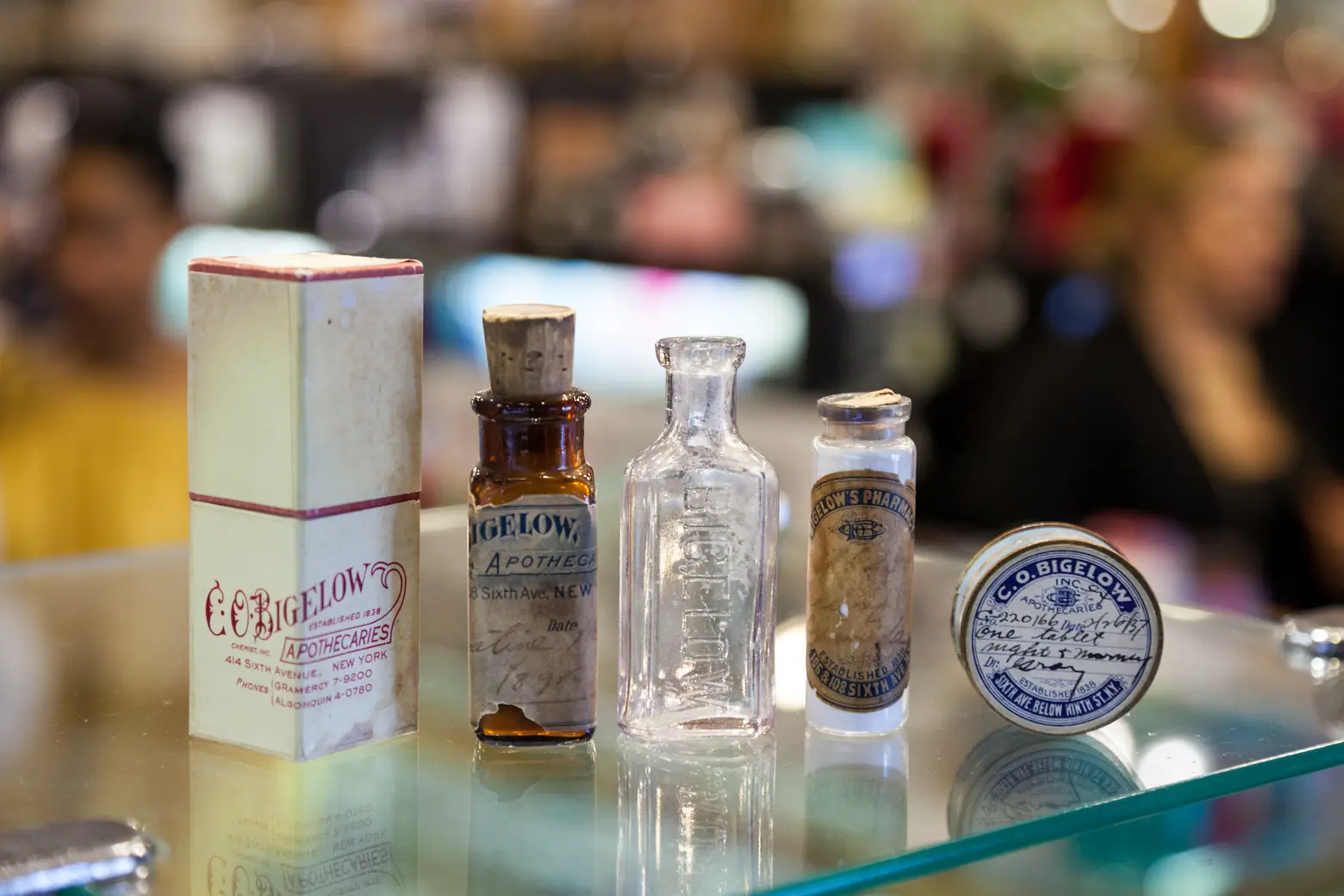
In addition to being a registered pharmacist, you also became a buyer for the business, how did you find the wide of interesting products that Bigelow currently sells?
European retail, and specifically European Pharmacies always fascinated me. I began going overseas to Europe in 1988 to shop for personal care products that are difficult to find and still visit several times a year.

How does the store stay current/on-trend and compete with national chain stores but at the same time remain true to Bigelow’s traditional customer?
We are operating a traditional business in a modern world…that continues to evolve at warp speed. However, what doesn’t change is how people want to feel. We are in the “feel good” business and everything we do from the beauty business to the pharmacy to our medical-surgical business centers around how we can enrich our customers and patients’ lives and make their experience exceptional.
Everyone’s time, especially now, is extremely valuable and we need to continually create an environment where people want to be…not need to be. We have the most incredible back office and front-facing team in all of retail. They are passionate, they are driven and they work hard at making every customer feel special. Competitors always want to try and understand our “secret sauce”….our secret sauce is our team.

What made you decide to take the business into the 21st century by offering Bigelow’s products on the Internet via e-commerce?
We’ve been selling on the web since about 2000. You have to…we live in a global world and you need to reach everyone where they are. If we want to compete with the giants we have to behave like a giant. Every retailer needs to have an online presence.
We noticed that the store has a large selection of ladies hair barrettes. Why did you choose to devote two large showcases to those items?
Our team here knows our customer well and we can move quickly to deliver what they want. We look for opportunities and our customer wants this and frankly, there is no one else doing it like us. It’s not an easy category to be in and stay relevant. This is just one of many categories for products that our customers come to expect the best.
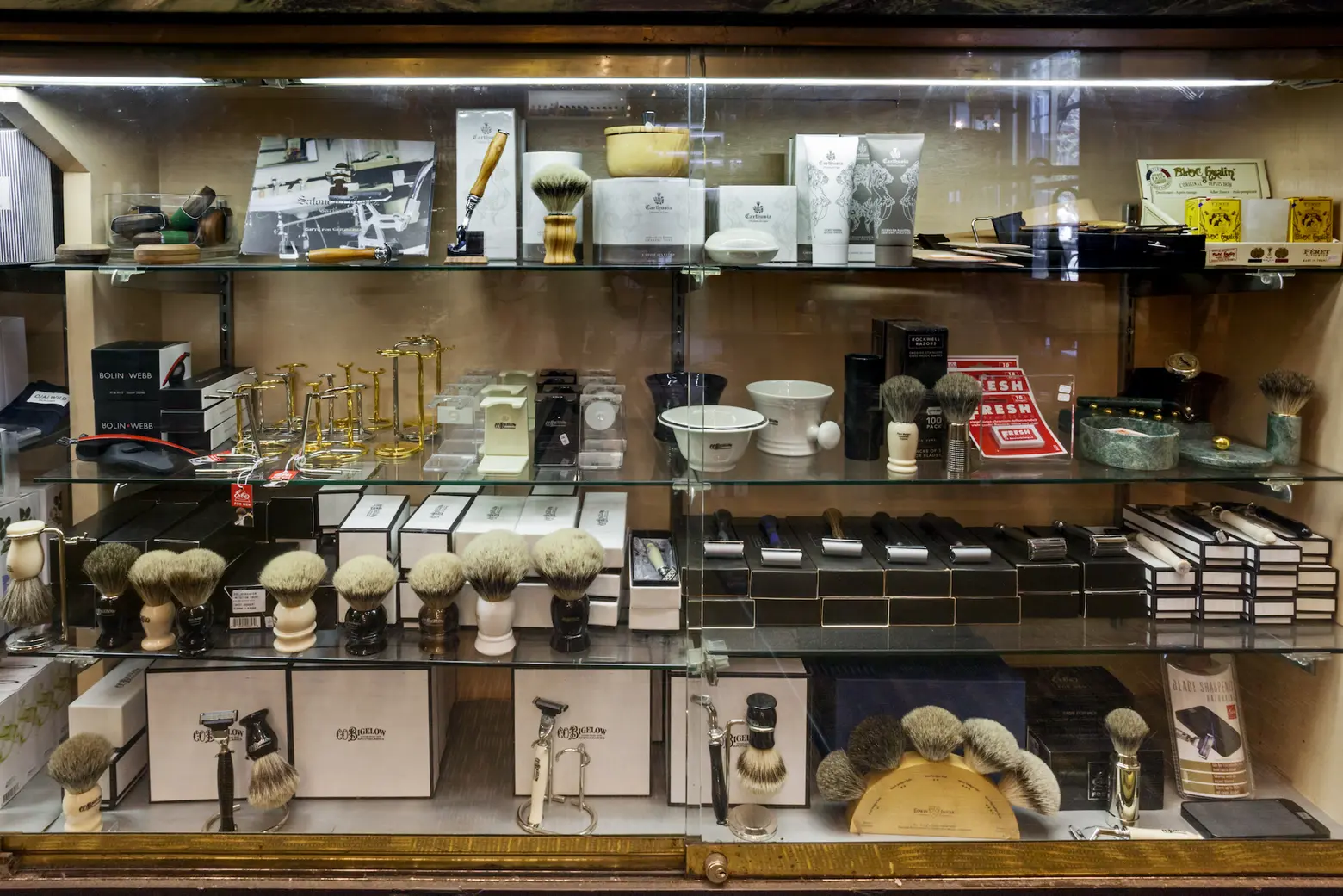
There also is a large area devoted to men’s shaving items. Is your customer base equally divided between women and men?
That’s hard to say but I would imagine we are at about 70% women and 30% men. Men have now become product junkies too and like women, they trust us, and our view on really great products.
You told us that customer service is of the utmost importance at Bigelow, do you have any specific stories that represent this?
We deliver 7 days a week rain or snow. Our pharmacists have been known to make house calls after hours to check up on patients, bring grocery essentials or just stop by to have a cup of coffee. Everyone says they give great service….at C.O. Bigelow, we can define exactly what that means as can our customers. These are just a couple of examples but there are tons of little things we do every day. You just have to join us to find out!

The store is currently under scaffolding, but we can still see a glimpse of its iconic oversize neon signage. Can you tell us more about this historic sign?
The large overhanging neon sign we have outside is from the late 1930s but is not the original neon sign. I have an old photo of the original neon sign that was in place in 1932 when the 6th Avenue El ran by us and the Women’s House of Detention had just been opened. The original sign was similar in size but had a slightly different shape to the top part. I am not sure why it was replaced but we are very lucky to have such an iconic sign because we would never be able to put up a sign that large today.

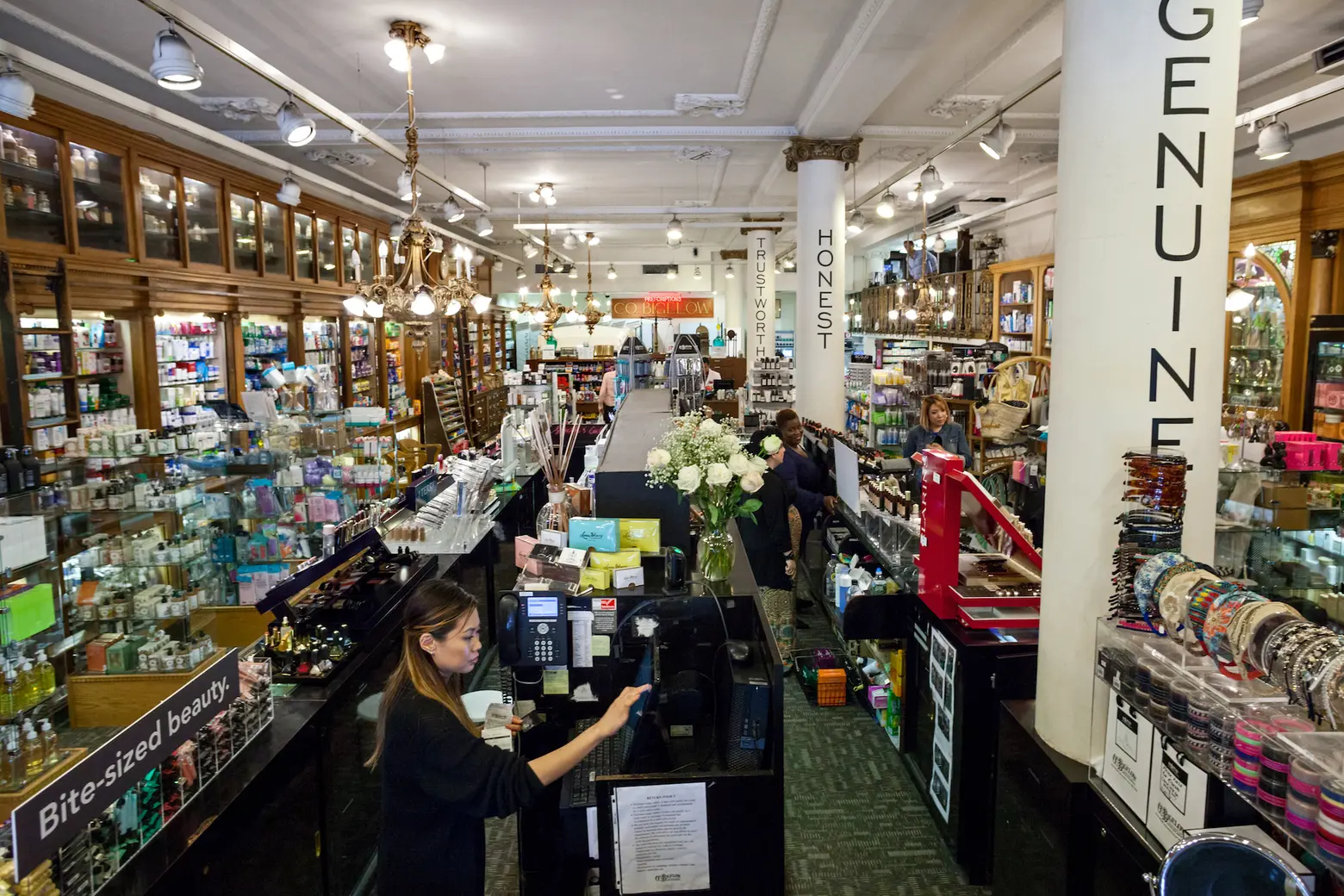
On the pillars inside of the store are written in large letters: genuine, honest, and trustworthy. When were those added and why?
“Genuine Honest Trustworthy” has been our mantra since day 1…it’s everything we live by and everything we continually strive to be. In this current world of chaos we live in, people crave things that are real, authentic and with no BS. It’s a reminder to all of us, and our customers, of where we started, and what has kept us here. We put them up on the columns about 10-15 years ago where they will remain as long as I’m in charge.
+++
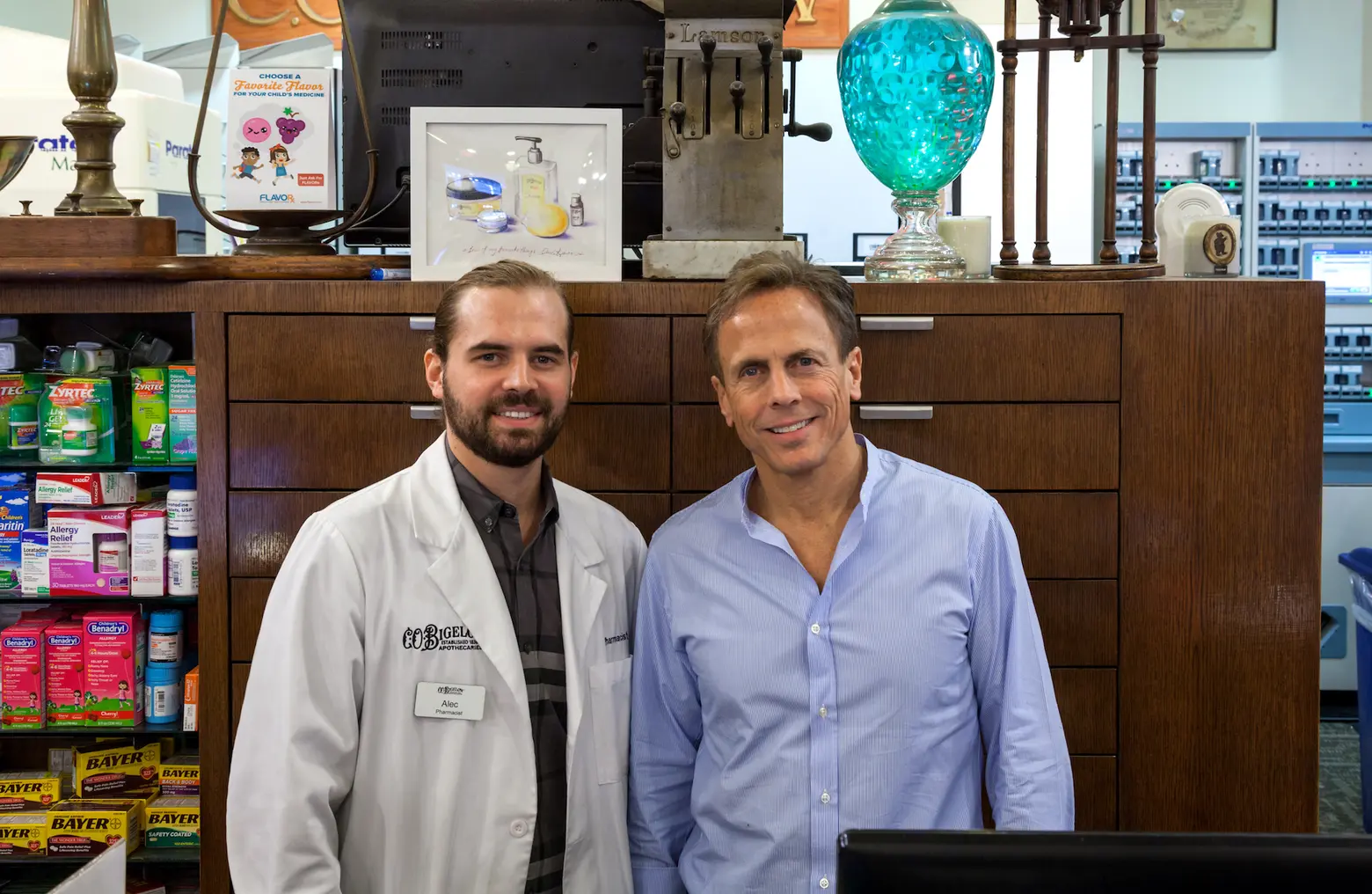
Ian Ginsberg and his son Alec

Allegra, the in-store cat can often be found sitting in the store’s front window, watching people passing by Sixth Avenue or climbing the original, twisting staircase to the upper offices. Interestingly, Allegra is named after the allergy medicine because Ian Ginsberg is allergic to cats. Allegra is the fourth cat to reside at Bigelow, and the first cat, Mr. Bigelow even had his own New York Times Obituary.
Ian’s son Alec has also joined the family business as a licensed pharmacist.
RELATED:
- Where I Work: Inside Stephen Powers’ colorful world of studio art and sign making in Boerum Hill
- Where I Work: Architecture firm Woods Bagot shows off their ‘raw’ FiDi studio
- How COOKFOX Architects outfitted their Midtown office with wellness technology and outdoor space
All photos taken by James and Karla Murray exclusively for 6sqft. Photos are not to be reproduced without written permission from 6sqft.
+++

James and Karla Murray are husband-and-wife New York-based photographers and authors. Their critically acclaimed books include Store Front: The Disappearing Face of New York, New York Nights, Store Front II- A History Preserved and Broken Windows-Graffiti NYC. The authors’ landmark 2008 book, Store Front, was cited in Bookforum’s Dec/Jan 2015 issue as one of the “Exemplary art books from the past two decades” and heralded as “One of the periods most successful New York books.” New York Nights was the winner of the prestigious New York Society Library’s 2012 New York City Book Award. James and Karla Murray’s work has been exhibited widely in major institutions and galleries, including solo exhibitions at the Brooklyn Historical Society, Clic Gallery in New York City, and Fotogalerie Im Blauen Haus in Munich, Germany, and group shows at the New-York Historical Society and the Museum of Neon Art in Glendale, CA. Their photographs are included in the permanent collections of major institutions, including the Smithsonian Center for Folklife and Cultural Heritage, the New York Public Library, and NYU Langone Medical Center. James and Karla were awarded the 2015 Regina Kellerman Award by the Greenwich Village Society for Historic Preservation (GVSHP) in recognition of their significant contribution to the quality of life in Greenwich Village, the East Village, and NoHo. James and Karla live in the East Village of Manhattan with their dog Hudson.

